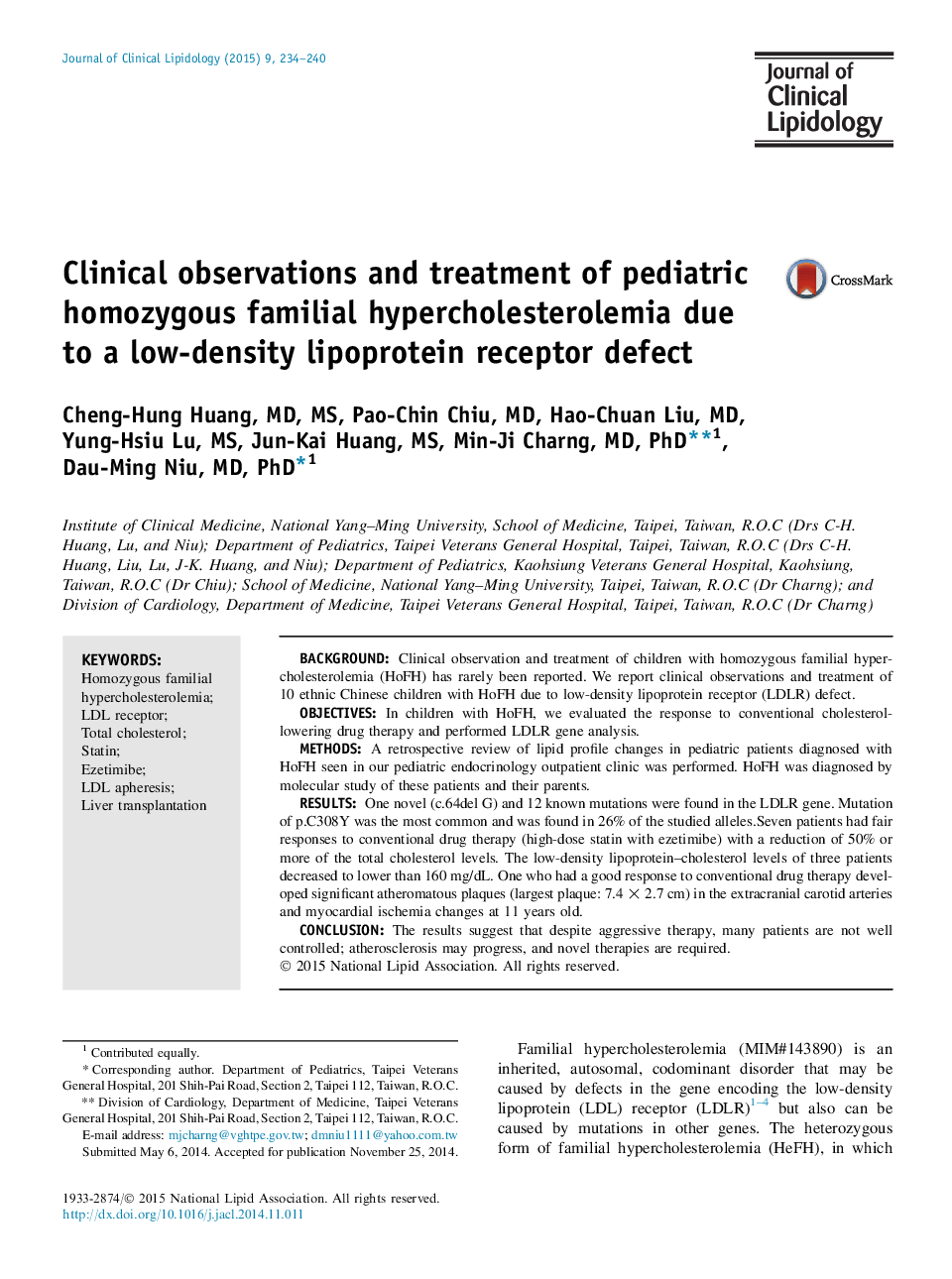| کد مقاله | کد نشریه | سال انتشار | مقاله انگلیسی | نسخه تمام متن |
|---|---|---|---|---|
| 5985875 | 1178784 | 2015 | 7 صفحه PDF | دانلود رایگان |
- We evaluated responses to conventional lipid-lowering therapies in 10 pediatric homozygous familial hypercholesterolemia patients.
- One novel (c.64del G) and 12 known mutations were found in the low-density lipoprotein receptor gene.
- The mutation p.C308Y was the most common and found in 26% of the studied alleles.
- More aggressive therapy should be introduced even with fair response to statins.
BackgroundClinical observation and treatment of children with homozygous familial hypercholesterolemia (HoFH) has rarely been reported. We report clinical observations and treatment of 10 ethnic Chinese children with HoFH due to low-density lipoprotein receptor (LDLR) defect.ObjectivesIn children with HoFH, we evaluated the response to conventional cholesterol-lowering drug therapy and performed LDLR gene analysis.MethodsA retrospective review of lipid profile changes in pediatric patients diagnosed with HoFH seen in our pediatric endocrinology outpatient clinic was performed. HoFH was diagnosed by molecular study of these patients and their parents.ResultsOne novel (c.64del G) and 12 known mutations were found in the LDLR gene. Mutation of p.C308Y was the most common and was found in 26% of the studied alleles.Seven patients had fair responses to conventional drug therapy (high-dose statin with ezetimibe) with a reduction of 50% or more of the total cholesterol levels. The low-density lipoprotein-cholesterol levels of three patients decreased to lower than 160Â mg/dL. One who had a good response to conventional drug therapy developed significant atheromatous plaques (largest plaque: 7.4Â ÃÂ 2.7Â cm) in the extracranial carotid arteries and myocardial ischemia changes at 11Â years old.ConclusionThe results suggest that despite aggressive therapy, many patients are not well controlled; atherosclerosis may progress, and novel therapies are required.
Journal: Journal of Clinical Lipidology - Volume 9, Issue 2, MarchâApril 2015, Pages 234-240
